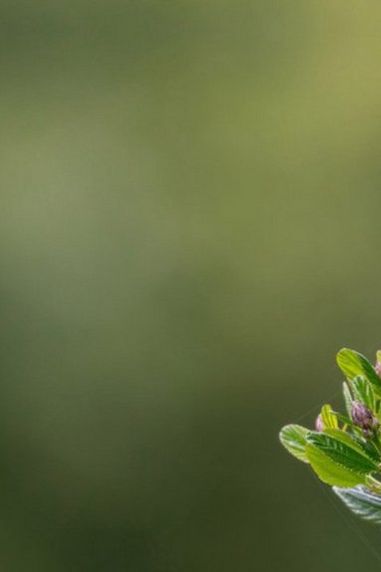
Here in Britain we have the luxury of seasonal wild fruits, vegetables and herbs out there that can be foraged and turned into delicious recipes. From blackberries to dandelion leaves, the fields, hedgerows and woodlands of Britain make up a varied, unique and delicious ingredients aisle.
As the sun is shining and we are all sticking close to our local areas, now is a great to head out and pluck something tasty. Here’s our Beginner’s Guide to foraging, with what you need to know to forage safely and responsibly. Plus, we’ve included some recipe cards to turn your finds into feasts.
Permission first
Make sure where you are foraging isn’t private land and, if it is, seek the necessary permissions. Check for signage around Woodland and National Trust sites that indicate areas you should definitely not forage. If in doubt, find someone and ask.
Forage responsibly
As fun as hunting for ingredients is, please remember to forage safely and responsibly. Remember the following:
- Do not over pick and remember that others may be foraging, so make sure you leave enough for others. That includes wildlife who may be dependent on local sources of food.
- Make sure you’re leaving the area as it was so things can regrow. Be mindful of where you step and keep your eyes on your feet to make sure you aren’t trampling anything.
- When foraging up high make sure you’re careful not to break branches or pull out any roots so things can regrow year after year
Know what you’re foraging for
It’s crucial to know what you are looking for, to ensure you avoid things that are poisonous or harmful to humans. If you intend to go fungi foraging, try and take an experienced guide with you until you are confident identifying edible species. Also make sure you only forage unprotected species of plant.
Wild Garlic

When: March – June, usually young before April and flowering afterwards.
Where: Ancient woodland, damp ground areas
Make sure to pick wild garlic before the flowers start to bloom; that’s when the flavour will be most intense and the best for all your recipes. That said, it’s still good to go post flowering, especially if you want a subtler flavour.
You will probably smell wild garlic before you find it. It loves damp ground and is usually found in ancient forests. If there are bluebells near you, there’s a good chance that you may find some wild garlic too as they love the same acidic soil.
The leaves of wild garlic are what you want, as opposed to the bulb of traditional garlic. Don’t mistake it for Lily of the Valley or meadow saffron, which are both poisonous to humans. Give it a little crush and if it smells like garlic, well you’ve found what you’re looking for!
Recipes
Common Nettle (Stinging Nettle)
When: All year, best from Spring - Autumn.
Where: Woodland, parks, along roadside hedgerows, mountains and more.
Ideally you'd like to pick your nettles before the flowers start to bloom; that’s when the flavour will be best. Nettles consumed during/after the flowering period can also cause a laxative effect so be cautious!
I'm sure you have dealt with nettles in the past, and it's in the name that they can indeed give you a sting (or few) so whilst foraging we recommend you wear a long sleeved t-shirt, full length trousers, closed toe shoes and a pair of thick gloves. The sting of the nettle stays apparent until cooking so make sure you wear gloves or use tongs when washing and preparing too.
Stick to the leaves as opposed to the stalks. The flavour profile is similar to spinach so they're a great substitue for any spinach recipe, plus they're jam packed full of vitamins and minerals. A quick boil or saute will remove all sting and make them meal ready!
Recipes
Spinach and Feta Rolls
Nettle Soup
Dandelion

When: March – June, usually young before April and flowering afterwards.
Where: Everywhere! Road sides, walls, cracks in paths, fields, hedgerows, gardens and more.
There’s not much to say on how and where to forage dandelions. They’re abundant almost everywhere, including your back garden. Make sure to avoid any patches close to the road side as car pollution isn't tasty.
Dandelions are very nutritious and come with several benefits, they’re more than just a pesky weed. They’re full of vitamin A, K, calcium and potassium. Don’t wash your leaves until you’re ready to eat and washing promotes wilting.
The leaves can be used well in savoury dishes as a substitute for kale or spring greens. The yellow flowered buds look and taste great in sweet treats and tea.
Recipes
Asian Style Sauteed Dandelion Leaves
Vegan Lemon & Dandelion Drizzle Cake
Elderflower

When: May – Mid June
Where: Forests, parks, along roadside hedgerows
Elderflower is pretty common across the UK, popping up in hedgerows in forests, parks, and along the roadside. Try to avoid roadside foraging as traffic pollution isn't tasty. Remember that Elderflower grows from a bush and not from the ground like a typical flower and do not mistake it for Water Hemlock, which does grow from the ground and is poisonous to humans.
When you forage Elderflower, make sure they’re perfectly bloomed and avoid any that have started to turn brown. Locate your source early in the season so that you can track its progress and know you’re getting the perfect flowers. Note that Elderflower bushes can grow to several metres tall so you may need to return with a step ladder if you’re short!
Recipes
Elderflower Cordial (turn it into a great cocktail with a shot of gin, a shot of elderflower cordial and topped with prosecco)
Blackberry & Elderflower Sorbet
Marsh Samphire

When: June - August
Where: salt marshes, mud flats across the coast
When foraging samphire it's important to leave the roots and stem intacts. Take a pair of scissors and cut the top parts of plant. Never pull the plant outright as this will prevent it growing back. Full of Vitamins and dietary fibre, it’s a great vegetable to add to your diet when in season.
Samphire is extremely salty due to its closeness to the sea so make sure you rinse in fresh water several times before cooking, this also gets rid of any grit and creepy crawlies that may have hitchhiked.
Recipes
Potato, Asparagus and Samphire Tart
Blackberries

When: August - September
Where: woodland, hedges, waste ground, and shrub ground
Blckberries are a classic British summer fruit. Aim for berries higher up on the bramble to avoid any that may have been tainted by passing dogs! Remember that some juice will come out of the blackberries as you pick them so avoid wearing your Sunday best or that nice white summer dress. Only pick black blackberries as red are under-ripe and don’t have the same great sweet taste.
As with dandelion leaves, store your blackberries in the fridge unwashed to keep their freshness longer. When you are ready to use them, soak in water between 30 mins to an hour to bring out any dirt or creepy crawlies.
Recipes
Rosehips

When: End of September - December
Where: rosebushes in woods, roadside hedgerows, coastlines
Rosehips are a great natural source of Vitamin C. During WWII they were used as a replacement when other citrus fruits like oranges weren’t eas to find.
The best time to forage would be after a frost as this makes the flavour of the rosehips much sweeter and less tart. Watch out for thorns when foraging rosehips, we recommend wearing gloves when going picking. The seeds inside the rosehip have little itchy hairs (used for itching powder!) so make sure to remove them when you eat.
Recipes
So happy foraging. Getting out there and picking your own ingredients is a great way to enjoy the outdoors with the family over the weekend, without going too far from home.
We'd love to hear your own tips, suggestions, recipes, and see any of your finished dishes on our social channels.





